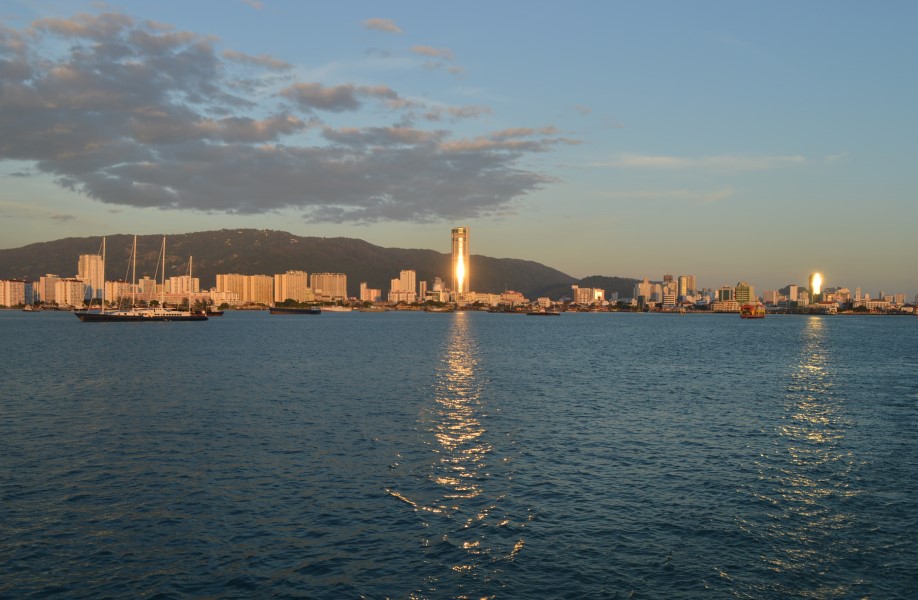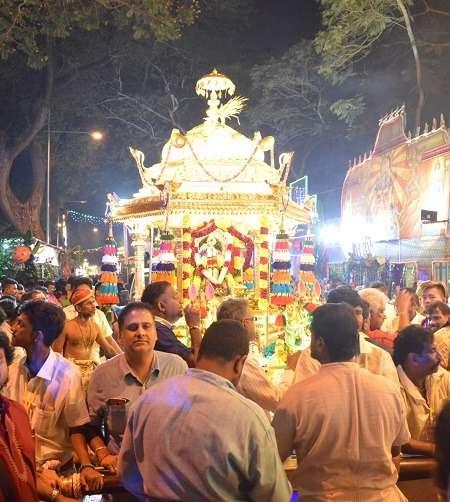The Penang travel guide begins with a brief introduction to the local Malay language. First of all, “Penang” is the non-Malay version of the island’s name. Indeed, the correct name is actually Pulau Pinang. In the local Malay dialect, Pulau means island and Pinang means “betel nut palm”. Therefore, the meaning of Penang would translate as the “Island of the Betel Nut Palm”.
The betel nut palm grows naturally throughout SE Asia and the islands in the south Pacific. Additionally, the nut has a mild narcotic effect similar to nicotine. The local Penang villagers have chewed it like common tobacco for many centuries.
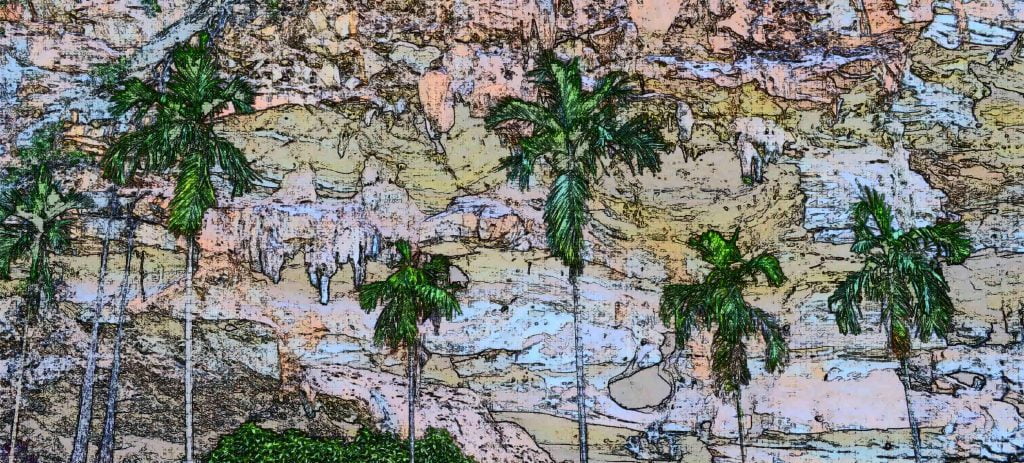
Ancient Chinese Explorers Discover Penang
The ambitions of the Ming Dynasty led to the exploration of the Strait of Malacca and the discovery of Penang. Indeed, the seafaring maps of the Chinese explorer Admiral Zheng He documented the discovery of the island over 4 centuries ago. Penang’s main attraction was its location as a seafaring port for the accommodation of trade.
In modern times, Pulau Pinang has a very large Chinese population relative to other states in Malaysia. However, large scale Chinese immigration to Malaysia would not begin until the 19th century during the tin mining boom.
The Arrival of British Colonialism
In 1786, the British colonists would arrive in the form of the British East India Company. Indeed, the company immediately recognized the strategic geographical importance of Penang’s location. Being located on the Strait of Malacca was ideal for the establishment of a British stronghold to check the colonial endeavors of the French and Dutch in SE Asia. Additionally, the location of Penang was ideal to establish a seaport on the lucrative sea lanes that ran between China and India.
The British were also keen to exploit Malaysia’s vast agricultural potential. As a result, the colonists established large scale rubber plantations and mining operations. Additionally, the British encouraged large scale immigration from their other colonies in India and China. Their timing was advantageous because demand for rubber and tin would explode in the late 19th century (tin mines and rubber plantations were located nearby in peninsular Malaysia).
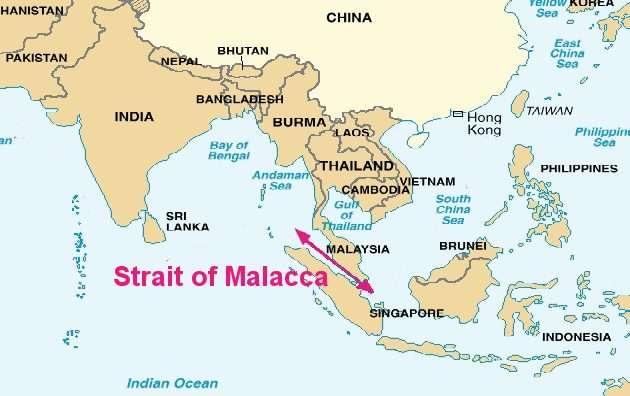
The British Acquisition of Penang
Captain Francis Light represented the British to negotiate with the Sultan of Kedah regarding the acquisition of Penang. For the captain, the timing could not be better. Fortunately, the sultan had been having difficulties repelling the incursions of the Siamese and Burmese. As a result, he agreed to let the British have possession of Pulau Pinang in return for military assistance.
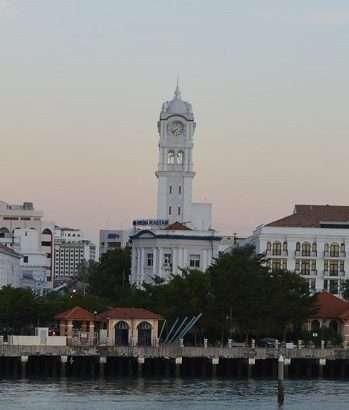

Unfortunately for the sultan, the British would renege on their promise of protection. Nonetheless, Penang would remain as a British possession until the 20th century Japanese occupation and Malaysian Independence.
Things to do in Penang, Malaysia
Pulau Pinang offers an extraordinary selection of destinations for both short and long term stays. Therefore, city dwellers who enjoy the hustle and bustle of city life will be right at home here. Additionally, for nature lovers there are beaches and pristine mountain trails. Indeed, the island has a flora and fauna that will amaze both botanists and animal enthusiasts alike.
For the city dwellers, George Town is the second largest city in Malaysia and has all of the big city amenities. Shopping malls, museums, street art and a wide diversity of dining options are available to all who come here. Easy access to Seberang Perai from George Town via the local ferry will quickly put you at the doorstep of Peninsular Malaysia.
From the ferry terminal it is a short walk to both the ETS train and express bus service that runs throughout the peninsula. Additionally, Kuala Lumpur is only 2 hours away when you take the new ETS train.
Moreover, George Town suburbs such as Gurney Drive, Tanjung Tokong, Tanjung Bungah and Batu Feringghi are easily accessible from downtown.
Penang Botanical Gardens and Penang Hill
For those who prefer the natural environment you will enjoy many attractions on the island. These locations are all easily accessible from Komtar in George Town.
Penang Botanical Gardens – consists of a world class collection of trees and plants which have been cultivated and preserved for over a century. There is a wide diversity of flora and fauna for the novice and the botanist alike.
Penang Hill – is a challenging 5 kilometers uphill from the Botanical gardens, but it is a rewarding experience featuring the best views on the island. For those who wish to forgo the extra challenge of the uphill hike, there is the funicular train which will bring you straight to the top. Penang Hill will be the high point of your trip to the island – literally!

Penang Attractions on the West Side
Balik Palau – In English this translates as the “backside of the island”. This consists of a mountain drive through pristine jungle. Along the way there are waterfalls, durian farms, nutmeg plantations and local fruit stands to satisfy your curiosity. Additionally, there are some great viewpoints looking out over the Malacca Strait towards Sumatra.
Taman Negara – This translates as “state park” in English. Taman Negara is located in the NW section of the island just outside Teluk Bahang. For the adventurers, the park features nature hikes that take you past Monkey Beach to the Muka Head lighthouse. Additional hiking options include making the trek through the park to Pantai Kerakut. Boat rides are available to Monkey Beach from Teluk Bahang if you don’t want to sweat it out.
Tropical Spice Garden – located midway between Batu Feringghi and Teluk Bahang is the spice gardens of Pulau Pinang. At the spice garden you will get a good look at tropical spices and also the amazing flora that is endemic to the tropics. Additionally, there is a spice restaurant and gift shop located within the gardens for good food and souvenirs. A beach awaits across the road from the gardens plus more restaurants featuring local fare.
The Best Penang Beaches
Pantai Miami – no joking, they have a Miami Beach on Pulau Pinang! Located in Tanjung Bungah on the way to Batu Feringghi you will find a nice beach and seaside park. Additional attractions include the Cafe Miami and also Taman Rama Rama is nearby.
Monkey Beach – located a few kilometers from the park office at Taman Negara, Monkey beach is a refreshing destination after the hike in. There are restaurants available on the beach and cool drinks for a modest price. There are lots of monitor lizards and monkeys to enjoy in the area. If you are lucky you will spot some on the way in. Plus, there is sea transport to and from Teluk Bahang and also jet ski rentals.
Pantai Keracut – located across the promontory from Monkey Beach is Pantai Keracut. This is a more secluded option that involves a pristine jungle hike. There are mountain streams and small waterfalls to view along the way. Wildlife viewing opportunities includes seasonal nesting turtles. Plus, Tasik Meromiktik which contains a unique layered mixture of sea water and fresh water.
Batu Feringghi – features the premier beach on the island. This beach runs for 2-3 kilometers in front of the plush seaside resorts, restaurants, bars and cafes in Batu Feringghi.
Don’t Miss the Cultural Festivals!
Due to it’s genuine diversity, Penang Malaysia is the most unique cultural location in the world. During the colonial period, Penang was a hot spot for global immigration from Southern India and Southeast China. As a result, in George Town Penang there is an eclectic mix of indigenous Malay, Tamil Indians and Chinese.
Those that were once immigrants to Malaysia are now citizens of Malaysia. Nonetheless, they have remained true to their traditional cultures and religions. Therefore in Penang, we can enjoy some of the most fascinating and spectacular cultural festivals in the entire world.
Thaipusam Festival is celebrated annually during the Tamil month of Thai (January/February) and it is one of the most spectacular Penang festivals. During this 3 day celebration, the Tamil Indians pay tribute to their Lord Murugan. This is an excellent time to visit the Hindu temples in Penang and also experience Tamil food and religion.
Furthermore, Chinese New Year (CNY) is an annual event that displays Chinese cultural at its best. Additionally, there are extravagant firework displays every night that will light up the sky. During CNY there are many events and attractions such as the Pai Ti Kong celebration, Kek Lok Si Temple and also the Penang Street Party. Don’t miss it!
These festivals and many more can be enjoyed in Penang, Malaysia. In addition to the aforementioned festivals don’t miss the Penang Dragon Boat Festival, Penang Hot Air Balloon Festival, Hari Raya Aidilfitri and the Buddha Purnima.
Penang Food
The cultural diversity is also reflected in the many food varieties which are readily available. As a result, there are a large number of Indian, Chinese and Malay restaurants located throughout Georgetown.
Independent street vendors known as “hawkers” feature the local street food that Penang is famous for. As a result, there are “hawker centers” located throughout the island. One of the most popular hawker attractions is the Gurney Drive Hawker Center located adjacent to Gurney Paragon.
Plus, Chulia Street hawker stalls are very popular with tourists and locals. These food bazaars open up at night and the city comes alive to enjoy the great food, low prices and cooler temperatures.
An exotic local fruit called durian is one of the most infamous local delights. Unfortunately, durian has a bad reputation as being very smelly and having a strange taste. However, many people love it and travel from throughout Asia to enjoy Penang’s special fruit.
Due to Penang’s large Buddhist and Hindu population vegetarian restaurants are very common. Therefore, a large variety of both Chinese and also Indian varieties are available. A great vegetarian restaurant is available at the Kek Lok Si Buddhist temple on the lower levels.
Peranakan Chinese
The Peranakan Chinese or the Straits born Chinese are a cultural relic that was a product of British colonialism. Also known as “Baba Nyonya”, they are Chinese immigrants who came to the Malay Peninsula during the British colonial period.
Compared to other Chinese immigrants, the Peranakan Chinese are unique because they embraced the local Malay culture. This is in contrast with most other Chinese immigrants who bring China with them and retain their culture of origin. As a result, the Nyonya food has developed as a mixture of Malay spice with traditional Chinese foods. Visit the Penang Colonial Museum for a look into the history of the Peranakan Chinese culture.

“Malaysia My Second Home”
The open multicultural lifestyle in Malaysia is universal and all cultural elements are welcome here. As a result, the Malaysian Ministry of Tourism has made the country readily accessible to expats from around the world with a program called “Malaysia My Second Home” (MM2H).
As such, global travelers who visit Pulau Pinang and other locations throughout Malaysia have the viable option of relocating here. Furthermore, the culture, unique food, Penang Malaysia weather and brilliant natural environment are financially accessible to most people.
Indeed, the MM2H program is very competitive with similar long term visa programs throughout Asia and worldwide. As a result, there are clear novel benefits to procuring a MM2H Visa for you and your family. Typically, these types of programs which offer a high standard of living with low cost were ideal for retirees.
Indeed, a significant percentage of the 30,000 successful MM2H applicants are retirees. However, in the era of globalization, young jet setters may find that the Penang beaches and infrastructure suits them very well!
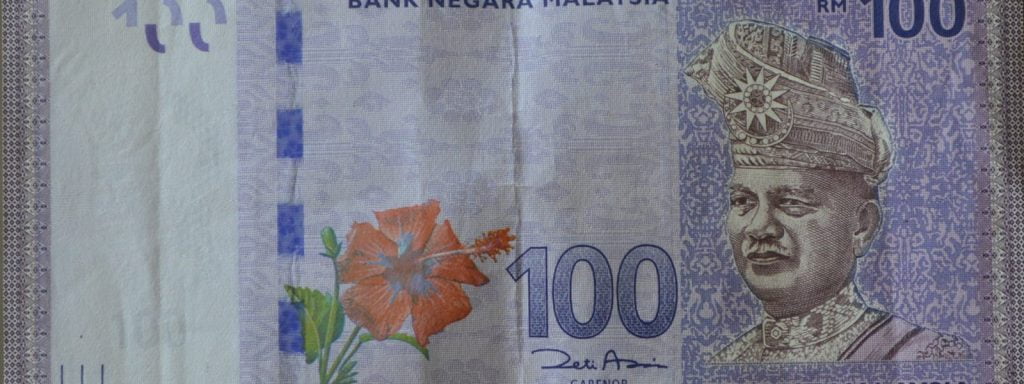
Successful applicants will receive a 10 year multiple entry visa. Upon approval, they can reside anywhere on peninsular Malaysia, the federal territories and Sabah. Additionally, they can bring their spouses, children and parents who are over 60 years of age.
Investment Opportunity in Malaysia
Economic opportunity here is infinite! The local economy is strong and has tremendous potential to evolve and increase interconnection with other ASEAN countries and also China.
Moreover, the banking system and government finances are sound in contrast to developed markets. Your MM2H visa will allow you to open bank accounts here in Malaysia that otherwise would not have been available. Plus, the offshore banking opportunities in the Labuan Federal Territory will offer you additional options for asset protection and wealth expansion.

